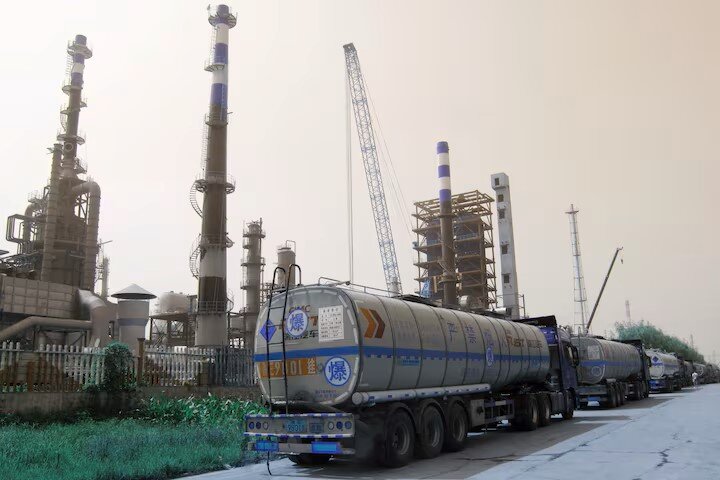Trump’s trade war on China: Implications on global trade

TEHRAN -- Economic conflict between China and the United States has been ongoing since January 2018, when the U.S. President Donald Trump began imposing tariffs and other trade barriers on China during his first term.
Trump’s so-called “Liberation Day” tariffs enacted this April have sent another shockwave through the global trading systems.
During his second term, Trump has enacted a series of tariffs affecting nearly all goods imported into the U.S. tariffs were imposed on roughly 60 nations with which the U.S. has the largest trade deficits. Nevertheless, Trump declared trade war on China by imposing 145 percent composite tariff rate on Chinese-origin goods exported to the U.S. Beijing retaliated with levying 125 percent duties on U.S. goods.
China overtook the U.S. as the world’s largest importer of crude oil for the first time in 2015 when Chinese crude imports hit 7.4 million barrels per day (bpd). Chinese crude oil imports stood at 11.96 million bpd in June. As the world’s fastest growing economy and top crude buyer, China is the largest purchaser of Iranian crude, importing more than 1.8 million barrels per day from June 1-20.
Trump’s tariffs are meant to slow down Chinese economic growth and decline its growing global political influence. One reason for applying pressure on China by levying such high tariffs is to disrupt China’s crude imports from Iran. China is also the primary destination for Venezuelan and Russian crude also sanctioned by the U.S. However, China has followed a logical and independent policy by purchasing from three sanctioned countries facing Western sanctions to save billions of dollars on its import bill in recent years due to discounted crude price.
China is known as the “world’s factory”. Many things that the American consumers buy today have “Made in China” label on it. Implication of Trump’s tariffs have been higher prices for the American consumers and applying pressure on China is to cut off its mainly independent buyers of Iranian crude and petrochemicals.
According to Vortexa, about 80 percent of crude exports originating from Iran, averaging 1.5 million bpd, have gone to China so far this year. Vortexa is a logistics firm that offers real time information for tracking energy and freight markets.
Tehran Times reported an all-time Iran’s crude export to China in March surpassing 1.8 million bpd, a 50 percent jump from the 2024 average. This also coincided with a rise of inventory levels in independent refining hub, also called teapot refiners, primarily located in Shandong province. Concerns regarding additional U.S. sanctions on Iran-linked tankers combined with the Israeli war of aggression has prompted Chinese refiners to accelerate stockpiling of energy resources.
Meanwhile, increase in the price of oil due to the recent Israeli aggression on Iran hasn’t been substantial: seven percent within a few hours of the military escalation. After Trump gave a green light to Chinese import of Iranian crude, oil prices plummeted five percent (Brent at $67.88, West Texas Intermediate at $65) as market reacted to potential implications of the recent Israeli aggression on Iran, the so-called “12-Day War”. Crude prices now are lower than they were in January.
The Center of Strategic International Studies (CSIS) puts the annual U.S.-China goods trade at $584 billion. With big stakes on both sides Trump’s tariffs could be an expensive war.
Tariffs vs sanctions
The tariff-based trade wars are different from secondary sanctions. First the secondary sanctions are meant to punish third-party buyers from doing business with the U.S. Department of Treasury and the dollar-based financial system. Pundits believe imposing tariffs work counter to the secondary sanctions because they undermine the economic interconnectivity that gives sanctions their strength.
Sanctions are designed to restrict economic engagement for a country, business, or individual actor. Tariffs, by contrast, are trade barriers aimed at protecting domestic industry by raising the cost of imports.
Tariffs, which Trump regards as a revenue-generating tools, are now replacing sanctions as America’s primary tool to coercive diplomacy. For example, in March, Trump threatened to impose ‘secondary tariffs’ on any country continuing to import Russian oil if Moscow rejected a U.S.-brokered ceasefire in Ukraine. Also in March, the administration levied a 25 percent ‘secondary tariff’ on buyers of Venezuelan oil.
Leave a Comment